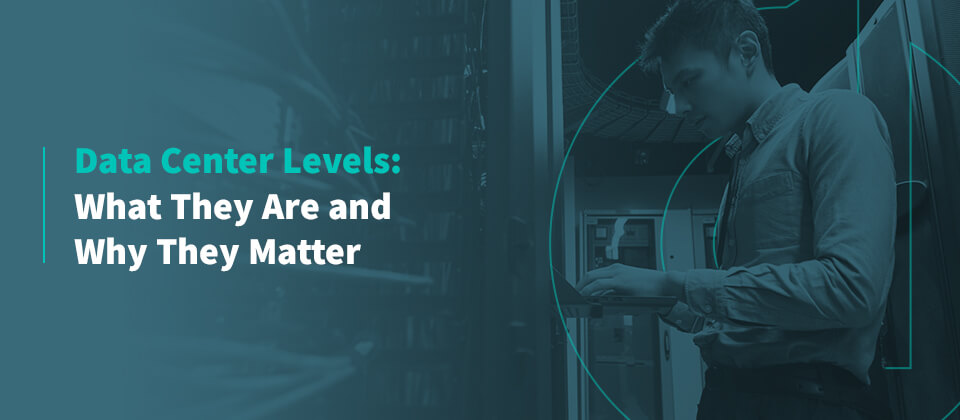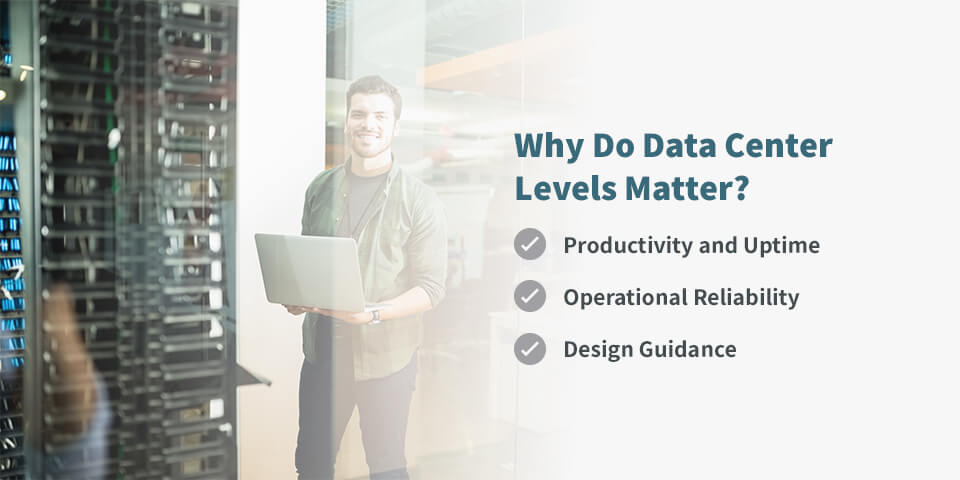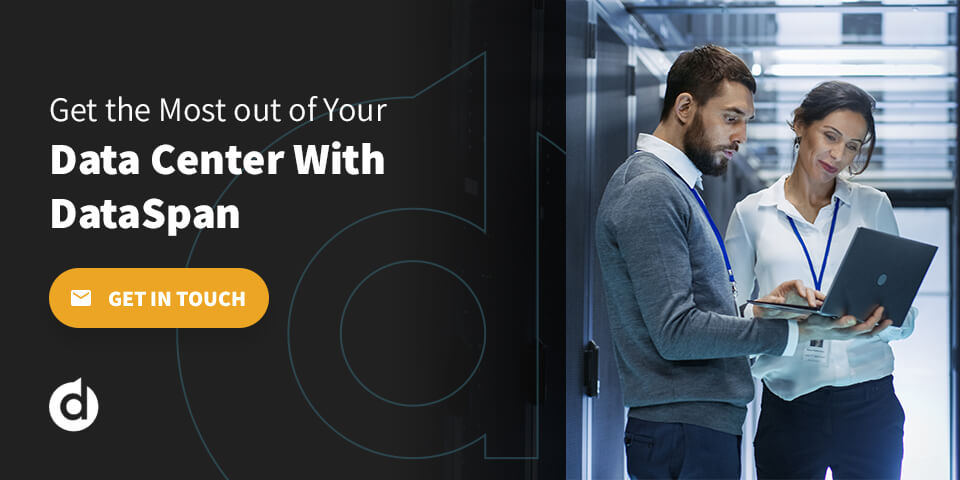
Data Center Levels: What They Are and Why They Matter
Any business that utilizes a data center should understand what infrastructure they require to support and protect their operations adequately. Finding the right data center solutions can help you reach your business goals and make the most of your computer systems. The different data center levels are characterized according to the system availability your company needs.
Learn more about data center levels and their importance for businesses of all sizes.
What Are Data Center Levels?
Data center levels, also referred to as data center tiers, refer to a tiering system that classifies specific types of IT infrastructure.
The Uptime Institute created tier standards more than 25 years ago to organize data centers in a consistent way. Numerous industries, ranging from construction to design, use their tiering definitions and criteria to classify data centers.
These standards include four tiers. The first tier has the simplest infrastructure, and each one is more sophisticated than the last, making Tier 4 the most complex and fault-tolerant of them all.
Businesses that utilize data centers should understand these levels to find the right fit that meets their infrastructure needs.
How Are Data Center Levels Classified?
All four data center tiers have unique characteristics, and each tier shares the requirements of the one before it. You’ll need to understand how each tier differs from one another before choosing the right data center level for your operation.
Tier 1
Tier 1 data centers are the simplest of the four categories. They have an expected uptime of 99.671% per year and 28.8 hours of possible downtime per year. This level’s setup utilizes only a single path for cooling and power and does not involve backup components or redundancy. When it’s time to perform maintenance on this tier, IT operations must completely shut down.
Tier 1 is ideal for small businesses and startups that do not require complex equipment. It is not for companies with mission-critical data centers. This data center level is an economical choice because it only includes essential components and infrastructure.
Tier 2
Tier 2 data centers have a slightly greater expected uptime of 99.741% per year while having 22 hours of potential downtime annually. This level utilizes a single path for power and cooling like Tier 1 but has redundant and backup components.
This tier has N+1 redundancy, meaning there is a power backup if one of the system components experiences a failure. Small businesses can especially benefit from this level. If your data center’s power path or infrastructure requires maintenance, you’ll need to shut down the whole system just as you would with a Tier 1 center.
Tier 3
Tier 3 data centers are more complicated than Tier 1 and 2. This level has an expected uptime of 99.982% while having 1.6 hours of potential downtime per year. It guarantees 72 hours of outage protection thanks to its N+1 redundancy, though some systems offer a higher redundancy. This category includes some backup and redundant components, as well.
Tier 3 utilizes multiple paths for power and cooling. These data centers are able to handle maintenance without needing to disrupt IT operations. As it can handle more complex components, this tier is ideal for growing businesses and large corporations.
Tier 4
Tier 4 data centers are the most sophisticated of the levels. This tier has the highest expected uptime of 99.995%. It has a maximum potential downtime of fewer than 26.3 minutes per year, and it is fault-tolerant due to these key features:
- Multiple distribution paths
- Independent architecture
- Backups for every critical component
This tier has 2N or 2N+1 redundancy, meaning there are double the necessary components or double the components plus two more to minimize risks and keep the data center functioning despite external forces. This makes it possible to maintain operations during downtime. With 96 hours of outage protection, Tier 4 is ideal for government entities and massive enterprises that need to keep their data centers running at all times.

Why Do Data Center Levels Matter?
Tiering systems help establish IT setups that meet the various needs of organizations with complex computer needs.
1. Productivity and Uptime
Data center tiers allow organizations to find the infrastructure and technology solutions that minimize potential downtime. When you optimize the setup of your components, you can boost operational productivity with consistent, reliable power supply and cooling functions.
Organizing according to data center levels helps keep operations up and running smoothly, despite what challenges may occur.
2. Operational Reliability
Businesses, especially those that provide software as a service, need assurance that their data center is reliable. They need power and cooling with the proper redundancy in place and systems that offer the least amount of downtime.
Having established levels allows businesses to find solutions that will boost their operational reliability and keep systems well maintained and secure.
3. Design Guidance
When a business is looking to build a new data center or update its current one, the four tiers can guide construction and design. The classification of each tier can aid in deciding which components and storage solutions your business’s operations mandate.
Factors to Consider When Choosing a Data Center Tier
When deciding on the right data center tier for your business’s IT operations, it is important to consider these factors:
Organization Size
Before choosing a data center tier, you should consider the size of your business. You’ll want to ensure you have adequate infrastructure in place to support your performance and security. Generally, the more complex and large a business is, the higher tier your operation will require.
Available Space
Organizations should also consider their data center’s availability regarding space. Whether your business rents somewhere to house their IT equipment or you have a space within your facility, the size of that space may impact what kind of setup will work best for your operations.
Security Needs
You should also factor in your business’s security requirements. The higher level of security your operation needs, the higher the tier you should choose. It is also beneficial to consider the influx of cyberattacks on businesses of all sizes. In 2020 alone, cybercrime cost small businesses $2.7 billion in the United States. Before choosing a tier, consider the amount of protection your company needs.
Get the Most out of Your Data Center With DataSpan
Over half of Fortune 1,000 Companies trust DataSpan with their data center solutions. We craft custom technology solutions that make your IT operations secure and run optimally.
Our data center services and products range from storage to networking solutions. When you partner with DataSpan, we find the data center strategy that meets all your infrastructure needs and helps you manage your data better than ever. Our team wants to help bring your data center to the next level.
Are you interested in learning more about optimizing your data center with DataSpan? Contact us today.








